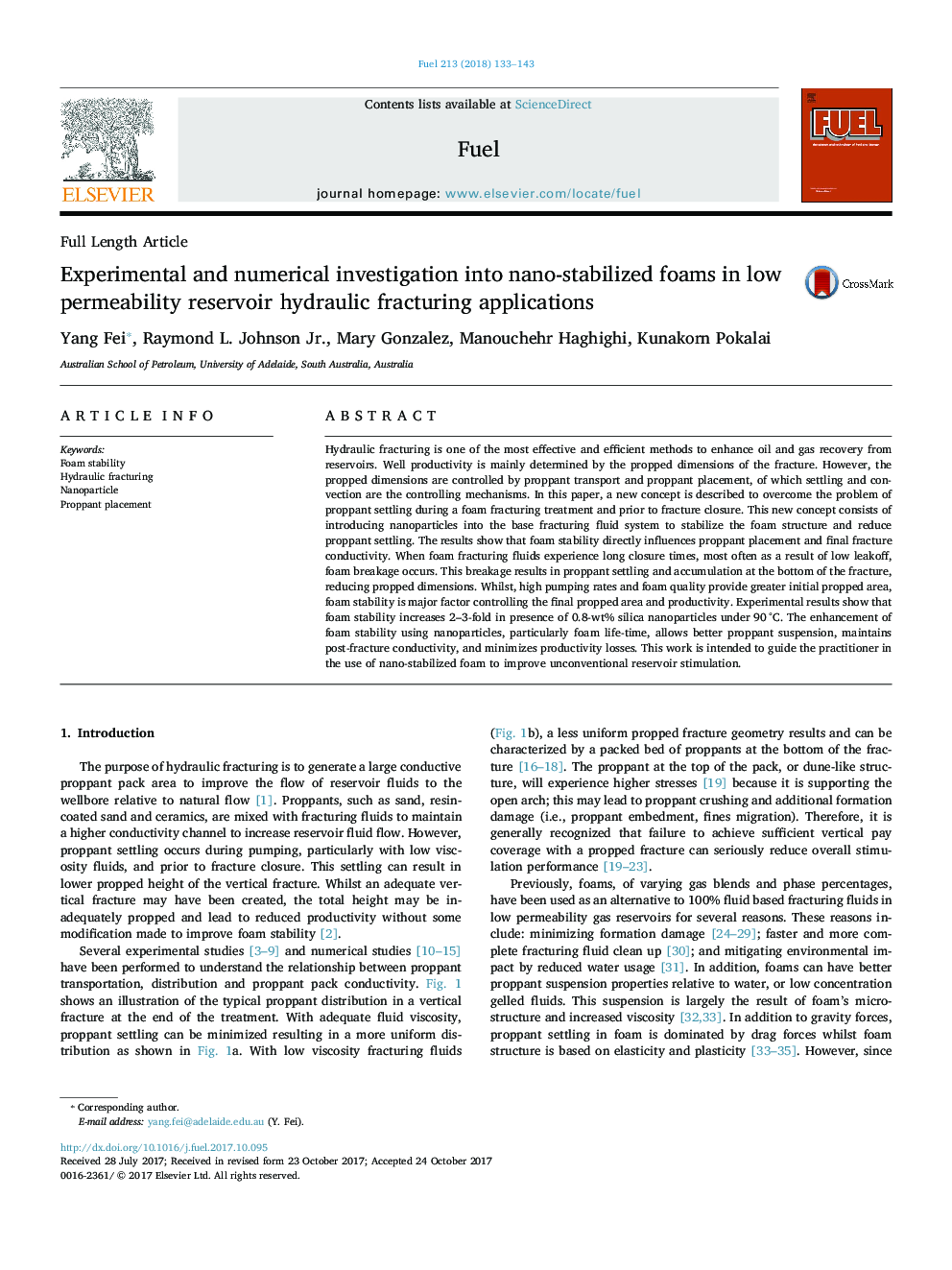| Article ID | Journal | Published Year | Pages | File Type |
|---|---|---|---|---|
| 6632558 | Fuel | 2018 | 11 Pages |
Abstract
Hydraulic fracturing is one of the most effective and efficient methods to enhance oil and gas recovery from reservoirs. Well productivity is mainly determined by the propped dimensions of the fracture. However, the propped dimensions are controlled by proppant transport and proppant placement, of which settling and convection are the controlling mechanisms. In this paper, a new concept is described to overcome the problem of proppant settling during a foam fracturing treatment and prior to fracture closure. This new concept consists of introducing nanoparticles into the base fracturing fluid system to stabilize the foam structure and reduce proppant settling. The results show that foam stability directly influences proppant placement and final fracture conductivity. When foam fracturing fluids experience long closure times, most often as a result of low leakoff, foam breakage occurs. This breakage results in proppant settling and accumulation at the bottom of the fracture, reducing propped dimensions. Whilst, high pumping rates and foam quality provide greater initial propped area, foam stability is major factor controlling the final propped area and productivity. Experimental results show that foam stability increases 2-3-fold in presence of 0.8-wt% silica nanoparticles under 90â¯Â°C. The enhancement of foam stability using nanoparticles, particularly foam life-time, allows better proppant suspension, maintains post-fracture conductivity, and minimizes productivity losses. This work is intended to guide the practitioner in the use of nano-stabilized foam to improve unconventional reservoir stimulation.
Related Topics
Physical Sciences and Engineering
Chemical Engineering
Chemical Engineering (General)
Authors
Yang Fei, Raymond L. Jr., Mary Gonzalez, Manouchehr Haghighi, Kunakorn Pokalai,
